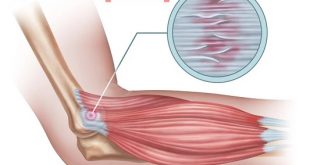What is Tumor lysis syndrome?
Tumor lysis syndrome (TLS) is characterized by rapid and massive destruction of tumor cells, which is caused by tumour cell death resulting in a sudden release into the blood stream of intracellular products (nucleic acids, potassium and phosphate). This can result in clinical toxicities including renal insufficiency, arrhythmias, seizures, neurological complications and potentially sudden death. Hypocalcemia is an indirect consequence of TLS and is mostly associated with hyperphosphatemia because the excess phosphate binds available serum calcium.
TLS may occur spontaneously before therapy (chemotherapy or radiation), but more often after the start of therapy including steroids. Severe TLS is most commonly associated with malignancies with high rate of cell turn over and or high tumour burden, particularly Burkitt lymphoma, lymphoblastic lymphoma and acute lymphoblastic leukaemias with high presentation white cell counts.
Epidemiology
The precise incidence of tumor lysis syndrome is not known. There are inherent risk factors that can increase the incidence of tumor lysis syndrome, including but not limited to tumor burden, tumors with a high rate of proliferation, tumors with high sensitivity to chemotherapy, and preexisting renal disease or impairment of the patient. The predisposition to tumor lysis syndrome is not related to race or sex. In a study that queried the database of the National Inpatient Sample, the most common malignancies associated with tumor lysis syndrome include non-Hodgkin lymphoma (30%), solid tumors (20%), acute myeloid leukemia (19%), and acute lymphocytic leukemia (13%). The overall in-hospital mortality was approximately 21%.
Pathophysiology of Tumor Lysis Syndrome
Cell destruction that occurs with aggressive treatment of malignant diseases causes a rise in excreted waste products and is accompanied by metabolic disturbance. Increased purine metabolism as a result of high tumor cell turnover leads to hyperuricemia. Cytolytic chemotherapy causes tumor cell breakdown and a rapid increase in plasma uric acid, potassium and phosphorus. These events together with hypocalcemia, which occurs as a consequence of increased phosphorus, are the major components of TLS. Development of acidosis can also be associated with TLS. Potassium, uric acid and phosphate are primarily excreted during renal clearance, and development of renal failure can further aggravate this electrolyte imbalance.
Normally, the urate is filtered by the glomerulus, partial proximal tubular reabsorption and distal renal tubular secretion of the kidney. The urate sometimes crystallizes in the distal tubule, where it can reach high concentrations as a result of active secretion and ongoing tubular acidification. The rate of urate clearance is highly dependent on the glomerular filtrate flow rate and may fall significantly if dehydration is present. Dehydration can occur as a consequence of tumor development or treatment, resulting in ureteral obstruction and other complications that further compound dehydration. Urate nephropathy develops as a result of the acid conditions and urate crystal formation in the renal tubules and collecting ducts. This condition can cause complications leading to renal insufficiency and therapy-related death; acute urate nephropathy associated with TLS results from pathological urate crystal deposition in the distal renal tubules. In certain patients, renal tumors may coexist with kidney pathology induced by TLS, which can manifest before the initiation of chemotherapy or up to 5 days after the chemotherapy, especially with tumors that are highly proliferative and sensitive to chemotherapy.
Causes of Tumor Lysis Syndrome
TLS is more likely to develop when certain cancers or blood disorders are treated with chemotherapy. These cancers cause a high white blood cell count, have a high tumour burden or have rapidly dividing cells that respond well to treatment. These include:
- Acute leukemia
- Aggressive non-Hodgkin lymphoma
- Myeloproliferative disorders
- Solid tumours such as hepatoblastoma and stage IV neuroblastoma
- Cancers that cause poor kidney function before treatment starts
Tumour lysis syndrome usually occurs at the start of chemotherapy when a large number of tumour cells are destroyed. It can occur within a few hours of treatment, but it is most often seen 48–72 hours (2–3 days) after treatment starts.
TLS is not limited to systemic chemotherapy, which travels throughout the body to destroy cancer cells. It can also occur with intrathecal chemotherapy, which is given directly into the fluid-filled space around the brain and spinal cord. TLS can develop after chemoembolization, which is a procedure that stops blood flow to a tumour and delivers chemotherapy directly to the tumour.
TLS has been linked with other treatments, including radiation therapy, corticosteroids, hormonal therapy and biological therapy.
Tumor Lysis Syndrome Symptoms
Tumor lysis syndrome usually develops within 12 to 72 hours after chemotherapy. Symptoms include:
- Nausea and vomiting
- Diarrhea
- Changes in how much pee you produce
- Weakness and lethargy
- Blood in your pee (hematuria)
- Seizures
- Muscle cramps
- Fainting (syncope)
- Irregular heartbeat
- Low blood pressure (hypotension)
- Joint pain
Risk factors
There are several things that can increase your risk of developing TLS, including the type of cancer you have. Cancers commonly associated with TLS include:
- Leukemia
- Non-hodgkin’s lymphoma
- Myeloproliferative neoplasms, such as myelofibrosis
- Blastomas in the liver or brain
- Cancers that affect kidney function before treatment
Other potential risk factors include:
- Large tumor size
- Poor kidney function
- Fast-growing tumors
- Certain chemotherapy medications, including cisplatin, cytarabine, etoposide, and paclitaxel
Complications of Tumor Lysis Syndrome
If a person does not receive treatment quickly enough or at all, they may experience complications such as heart failure, kidney failure, and even death.
Other complications may include:
- Delirium
- Hallucinations
- Cardiac arrhythmia
- Acute kidney injury
How to diagnosis tumor lysis syndrome?
Clinical signs, lab tests, and symptoms are used in diagnosing the tumor lysis syndrome.
The Cairo-bishop grading system, used in classifying and grading TLS, states lab anomalies in serum uric acid, phosphorus, potassium levels 25% increased over baseline, and serum calcium levels were decreased by 25% from baseline.
This system contemplates lab value alters that occur in patients from 3 days before to 7 days after the beginning of chemotherapy. The lab irregularity organized by the system is categorized based on cardiac dysrhythmias, seizures, severity including age-adjusted serum creatinine.
Tumor lysis syndrome is generally diagnosed by:
- Complete blood cell count
- Phosphorus and calcium test
- Urinalysis
- The uric acid level in the blood
- Creatinine level
Quick Identification Key
One can recover from this life-threatening problem of cancer treatment if they are promptly able to recognize the signs and symptoms of tumor lysis syndrome and take preventive measures.
Treatment
If a person is diagnosed with tumor lysis syndrome, they may be admitted to an intensive care unit (ICU) for continuous heart monitoring and care. In addition to the ICU specialist and the cancer care team, a kidney specialist (called a nephrologist) is usually consulted.
The treatment plan for TLS generally consists of the following therapies:
Vigorous Hydration and Monitoring Urine Output
The person with TLS will receive ample fluids through one or more intravenous (IV) lines with a goal of maintaining a urine output that is greater than 100 milliliters per hour (mL/h). A type of diuretic called Lasix (furosemide), may be given to help increase a person’s urine output.
Correcting Electrolyte Abnormalities
The person’s electrolytes will be monitored very carefully (every four to six hours, usually) and corrected as needed.
High potassium levels: To lower the potassium levels (which is critical as high levels can cause fatal heart arrhythmias), a doctor may administer one or more of the following therapies:
- Kayexalate (sodium polystyrene sulfonate)
- Intravenous (IV) insulin and glucose
- Calcium gluconate
- Albuterol
- Dialysis (if severe or persistent)
High phosphate levels: Drugs called oral phosphate binders such as PhosLo (calcium acetate) are taken with meals to reduce the absorption of phosphorus into the gut.
High uric acid levels: A drug called Elitek (rasburicase), which triggers the degradation of uric acid in the body, is often given.
Low calcium levels: Treatment for low calcium levels—giving calcium supplements is only done if a patient is symptomatic (for example, experiencing seizures or heart arrhythmia).
Dialysis
There are certain indications for dialysis in patients with tumor lysis syndrome.
Some of these indications include:
No or severely low urine output
- Fluid overload (this can cause complications like pulmonary edema, where the heart and lungs are flooded with excess fluid)
- Persistent hyperkalemia
- Symptomatic hypocalcemia
Prevention of Tumor Lysis Syndrome
Although spontaneous cases of TLS occur where preemptive therapy is not possible, the majority of cases of TLS can be predicted based on both tumor and patient-specific risk factors. Thus, imperative in the management of TLS is early and aggressive initiation of preventive measures that may both attenuate the severity of electrolyte disturbances and hopefully prevent any kidney damage as tumor cells begin to lyse.
Other preventive strategies may include:
- Monitoring closely fluid balance before chemotherapy
- Administering diuretics to improve urine output
- Monitoring closely potassium levels
- Administering medication to lower uric acid levels
 Diseases Treatments Dictionary This is complete solution to read all diseases treatments Which covers Prevention, Causes, Symptoms, Medical Terms, Drugs, Prescription, Natural Remedies with cures and Treatments. Most of the common diseases were listed in names, split with categories.
Diseases Treatments Dictionary This is complete solution to read all diseases treatments Which covers Prevention, Causes, Symptoms, Medical Terms, Drugs, Prescription, Natural Remedies with cures and Treatments. Most of the common diseases were listed in names, split with categories.







